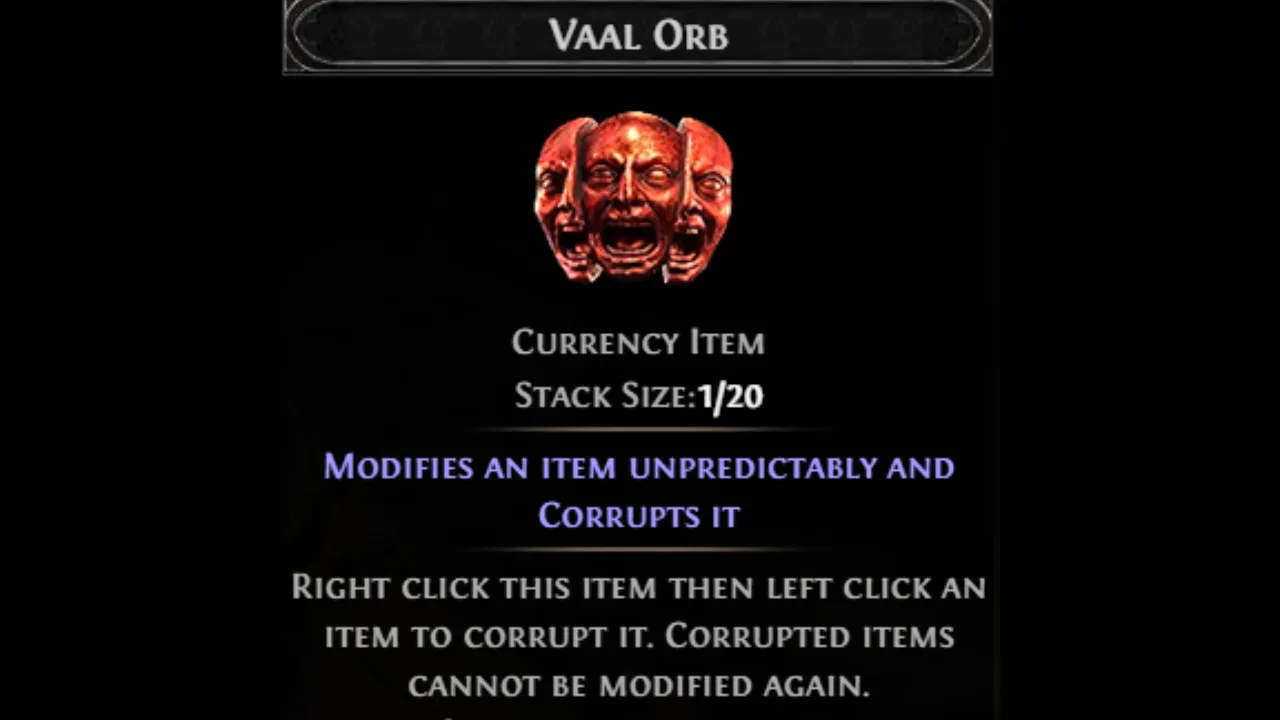A Vaal Orb is a currency item in Path of Exile 2 that allows you to corrupt an item, modifying it in unpredictable and irreversible ways. Once corrupted, an item is locked from further modification by standard currency. No Divine Orbs, no Exalts, not even socket tweaking. That means corruption is the final step in crafting. When you right-click a Vaal Orb and equip it onto your item, you’re rolling the dice for glory or garbage. In this guide, we’ll tell everything that can happen when you Va(a)lue your gear, including corrupting weapons, armor, jewels, skill gems, waystones, essences, and more. You should read this before sacrificing your prized five-link to the Vaal gods.
All Outcomes of Using a Vaal Orb on Items in PoE 2
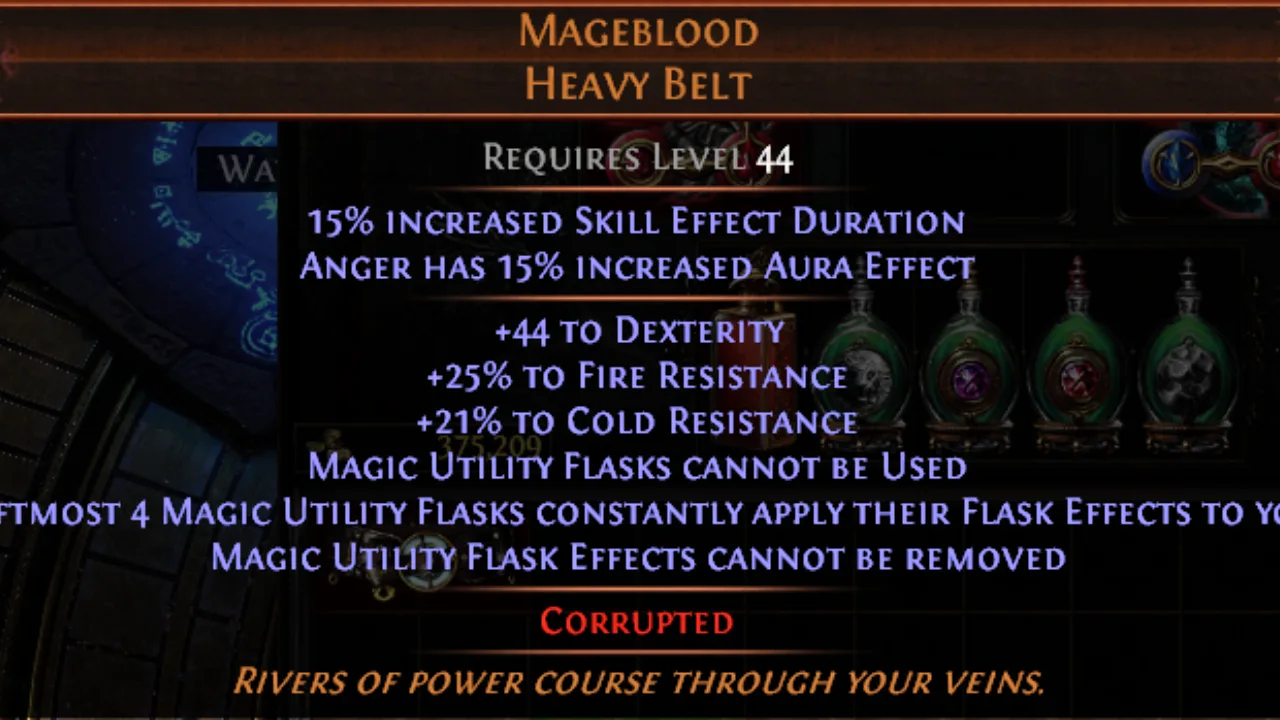
There are four core outcomes when corrupting an item. One will occur at random, which means no combinations, no guarantees.
No Change to Item (but it’s still corrupted)
Yes, the anticlimactic outcome. The item becomes corrupted with no stat change. It keeps all affixes, sockets, and quality, but it’s now locked from further crafting. This result looks like a waste unless you’re using an Omen of Corruption, which we’ll get to later.
Adds a Corrupted Implicit Modifier
The Vaal Orb adds a corruption-exclusive affix, appearing as an implicit mod. These can be game-changers — think about “+1 to all Skill Gems” on a chest or “Cannot be Frozen” on boots. Even if your item already has the maximum affixes, this one slips in on top.
Rerolls the Item’s Modifiers
Like a Chaos Orb on Steroids, this outcome rerolls the item’s affixes, and on Uniques, it can scale them beyond normal ranges. This is how a mod like “+1000 Life” could become “+1160“… or “+780“. Big risk, big numbers.
Adds a Socket (or Quality for Casters)
For martial weapons and body armor, it adds a socket, even exceeding the item’s natural socket cap. This is how you get gear items like three-socket swords or five-socket Unique armor, which are otherwise impossible. Instead of equipping a socket for caster weapons, it can provide 10% additional quality, capping out at 23%. On caster weapons, quality affects the skills granted by the weapon, which can lead to more damage, AoE, or other effects.
Corrupting Skill Gems

Skill gem corruption is the stuff that PoE legends are made of. Getting a Level 21 gem with 20% quality and multiple support sockets is like hitting the jackpot because it is. But getting there will require you to sacrifice a lot of gems. A skill gem might gain or lose a level, quality, or a support gem socket. It can also transform into its Vaal version if there exists one. This means you could end up with a 21/23 gem with 5 links… or a neutered 19/0 that has no support and sitting in your stash labeled “regret.”
A lot of players chase corrupted gems early in a league, but I always suggest holding off until you’ve got some wealth built up. Use Perfect Jeweller’s Orbs first to get the 4–5 support sockets and boost quality before corrupting. You can still level the gem after it’s corrupted, but quality becomes locked — no more GCPs. If you’re after a 21/20 gem, then get the gem to level 20 and 20% quality first, then use a Vaal Orb on it.
Moreover, don’t sleep on corrupted support gems. You can end up with gems like Awakened Multistrike with +1 level or other bonuses that turn a good build into a god-tier one. One last thing, if you’re in Solo Self-Found (SSF), don’t be afraid to throw Vaal Orbs at spare gems. You’ll either learn something useful or get a “museum stash tab” full of sad, corrupted experiments. It’s a tradition in this game.
Corrupting Unique Items
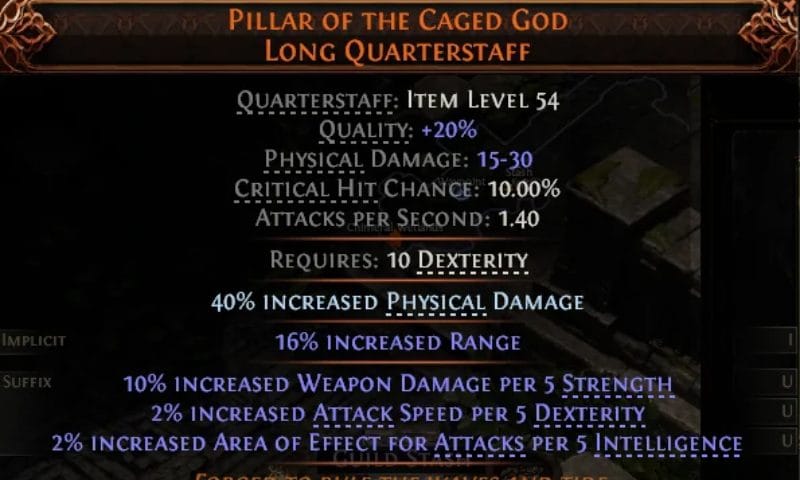
I will say that now we are getting into dangerous territory, which is corrupting Uniques. That’s where you stand to gain the most power, or lose an item you’ve centered your whole build around. It’s high-stakes crafting, and also some of the most interesting I’ve had in PoE 2. But also among the biggest regrets of the game. Corrupting a Unique works a bit differently from rares. Sure, you can still encounter the “no item change” outcome, which only places the corrupted tag on the item. But the other possible outcomes are where things get exciting.
One of the best possibilities is adding a corrupted implicit and this could be something simple like a resistance boost or something powerful like +1 to all Skill Gems, +30 Spirit, or unique effects that synergize with the item’s core identity. This is what players are usually aiming for when corrupting Uniques — a value-added implicit that turns a decent Unique into a generational piece.
Krangledivining outcome randomly scales all numeric modifiers on the Unique, sometimes above their normal caps. It works by multiplying each mod by a random factor between 0.78 and 1.22. It can even adjust decimals, like cooldown recovery, down to the hundredth of a second. The scaling can be subtle or dramatic, depending on the item. What’s important is that this outcome can break the usual limits. For example, an amulet with +4 to Fire Skills might krangle its way up to 5 and with quality bonuses, maybe even 6. This power is what top-tier builds chase after. But for every success story, someone is sobbing over their bricked Olroth’s Resolve that got downgraded by 22%.
Some Uniques can gain an extra socket, which is a massive deal on gear that supports Soul Cores, Runes, or active abilities. A shield or armor with a surprise third socket opens up new mechanics or extra damage scaling. If I had to give advice, corrupt Uniques only when you’re ready to either ascend or collapse. Do it when the potential gain outweighs the item’s current value or when you’ve got backups. Further, never do a Unique corruption that your entire build hinges on unless you’re comfortable rebuilding from scratch.
Corrupting Rare and Magic Items
Corrupting these Rare and Magic items is always a gamble, and while it can give you a massive edge, it can also straight-up trash an otherwise solid piece of equipment. You must understand both the potential and the risk before going for it.
What makes rare and magic items particularly tricky is that they already walk a tightrope between utility and value. They’re unlike Uniques that people build around — they are the build. If you have a chest with perfect resists, life, and a key affix like suppression or damage reduction, corrupting it is spinning a roulette wheel with your entire survival rate on the line. I generally recommend only corrupting rares if: (1) you have a backup, (2) the item is replaceable, or (3) you’re only experimenting in a trade league and can afford to take the hit.
Corrupting cheap rares with a strong base can be surprisingly rewarding. The floor is low, but the ceiling is sky-high. I’ve had two-socket gloves turn into three-socket variants with bonus Spirit, turning them into low-cost powerhouses. But don’t do this with something you’d cry over losing unless you don’t mind that kind of heartbreak.
Corrupting Jewels
Jewels are in an interesting spot when it comes to corruption. They don’t have the same all-or-nothing intensity as a six-link armor, but the stakes are still real, especially for build-defining rare jewels or uniques. When you corrupt a jewel, one of a few things can happen, and some of these outcomes are lowkey broken (in a good way).
The best possible outcome can be gaining a corrupted implicit, like Immunity to Corrupted Blood. This affix alone can save you an entire Passive Tree point or mod on gear. There’s also the rare case where corruption adds or removes a modifier, potentially pushing the jewel to five affixes — something you can’t achieve with usual crafting. I’ve had a Viridian Jewel go from “meh” to “wow” only by landing a fifth useful affix. It’s a long shot, but it happens.
On the flip side, corruption can also reroll all your affixes in a chaos-orb style mess. If it’s a rare jewel and that happens, you’re starting over. And if it’s a unique jewel, that roll won’t do anything but only a waste. So, I’ll corrupt rare jewels when they’re already solid but not great. If it’s a jewel I can replace easily or something I found while mapping and want to experiment with, I’ll take the gamble. But I don’t corrupt jewels that are core to my setup — not unless I have two copies and a devil-may-care attitude that day.
Corrupting Waystones (Maps)
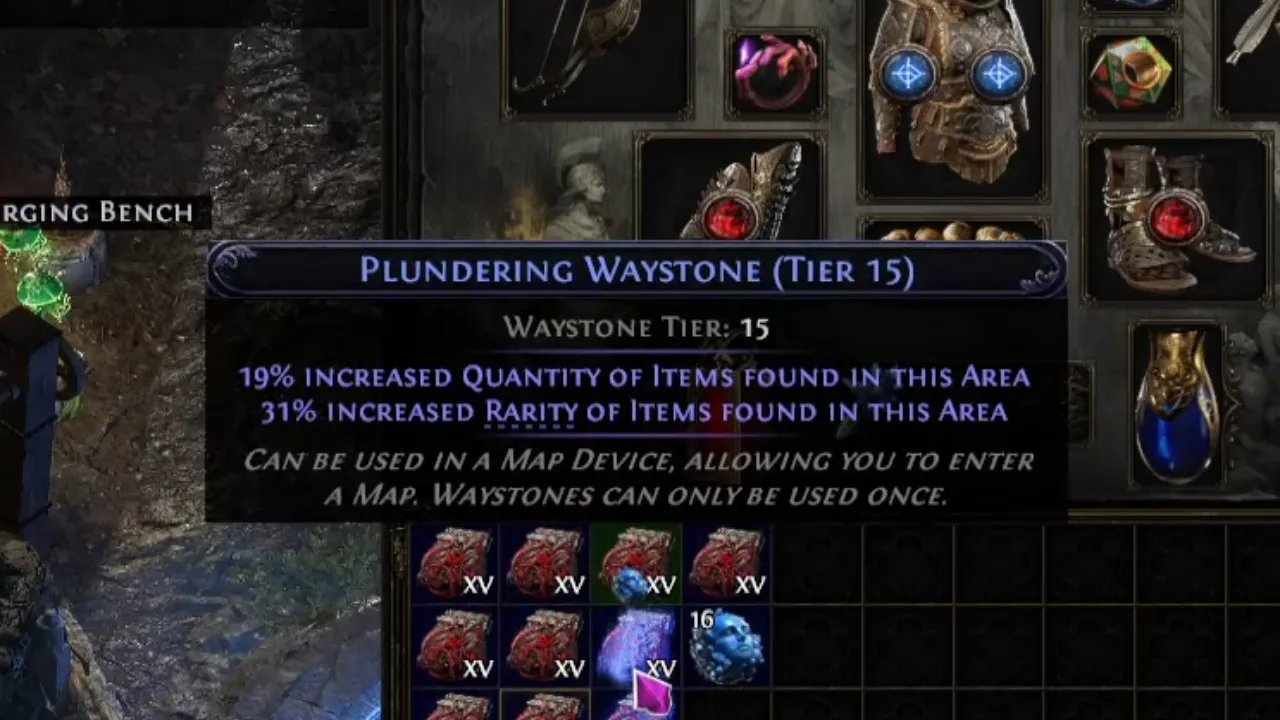
Waystones are the safest item to corrupt in PoE 2. That’s because none of the Vaal Orb corruption outcomes can ruin the map — even the “bad” outcomes still have utility. If you’re a farming-focused player, you’ll find yourself corrupting Waystones regularly once your build can handle tougher content.
So, you might see the Waystone gain or lose a tier, which can be good or bad, depending on your farming strategy. There’s also a chance that all affixes become either prefixes or suffixes, which can make the map massively rewarding or very dangerous. For example, if all the affixes become suffixes and you’ve got strong drop multipliers stacked up, it’s a loot piñata waiting to burst assuming you can survive the buffed-up monsters. Your Waystone can even end up with five prefixes and five suffixes, bypassing the normal affix cap. This is peak chaos, but it’s also how you get some of the most rewarding content in Path of Exile 2.
Corrupting a Tier 15 Waystone can upgrade it to Tier 16, which is how you unlock the highest tier of map rewards, including level 82 monsters and exclusive base types. You don’t need a good atlas strategy but only Vaal Orbs and a bit of nerve. So, corrupt as many Waystones as you can afford to. They’re cheap, they drop often, and the payoff can be huge, but make sure your character’s build is strong enough for it.
Corrupting Essences
You can corrupt imprisoned Essence monsters before fighting them. It’s a mechanic that’s low-key one of the most satisfying parts of essence farming in PoE 2. And in case you farm Silent Cave or build around Essence crafting, Vaal Orbs become valuable.
So, when you vaal an Essence monster before releasing it, these are a few different things that happen:
- Increase the number of Essences held by the monster
- Reroll the Essences into a different type
- Upgrade Essences to Greater Essences, or even better…
- Transform Greater Essences into Corrupted Essences
Corrupted Essences are high-tier crafting tools with effects you can’t get anywhere else such as:
- Essence of Horror
- Essence of Insanity
- Essence of Delirium
- Essence of Hysteria
Each of these has unique, game-warping mods, such as to put Cast While Channeling on a helmet, Corrupted Essences are the only way to do it. If you want to craft a weapon that does unholy amounts of elemental damage, you still require corrupted Essence. But after corruption, the monster’s difficulty scales up significantly. Most of these fights are not easy, especially when you’re underleveled or playing on Hardcore. I’ve had the experience of being one-shot by corrupted Essence bosses because I didn’t read the mods and got greedy.
Corrupting Flasks and Charms
When you corrupt a Flask or a Charm, it mostly tweaks quality with a ±10% roll. On Flasks, this can push quality up to 40% total if you start with a 30% one, which is good for builds that largely rely on Flask uptime. Charms are a little complex. Some quality boosts can increase the effect duration or the potency of the charm’s effect, but owing to how rounding works (especially on duration), there usually is no meaningful difference unless you optimize at the min-max level.
Path of Exile 2: Omen of Corruption
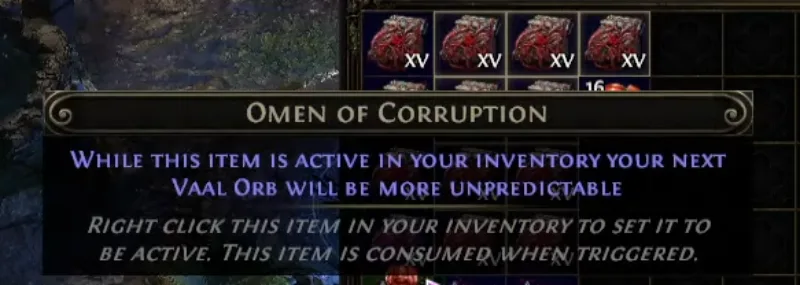
Omen of Corruption removes the “nothing happens or no item change” outcome from the pool, increasing the odds of either a good or bad effect. You use an Omen of Corruption before you Vaal an item. This removes the “No Effect” negative consequences, so to have either a corrupted implicit, a reroll of modifiers, or a socket/quality outcome.
It’s expensive, but when you’re trying to hit a life-changing roll on an item worth multiple Divines, it will be worth it. You can use this when your item is worth a ton, you’re rolling for a jackpot implicit, or want to avoid total anticlimax. But use with caution. It doesn’t guarantee a win, but it only guarantees something happens.

